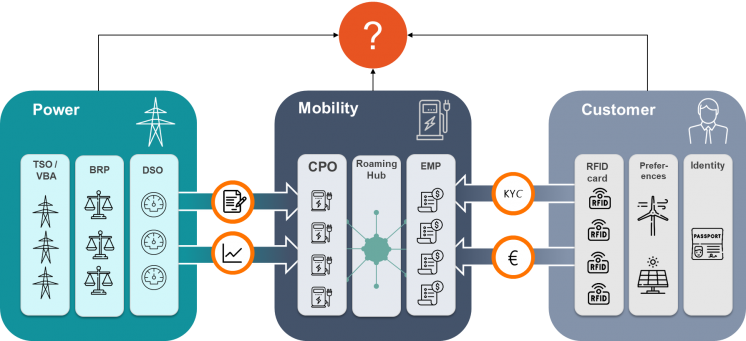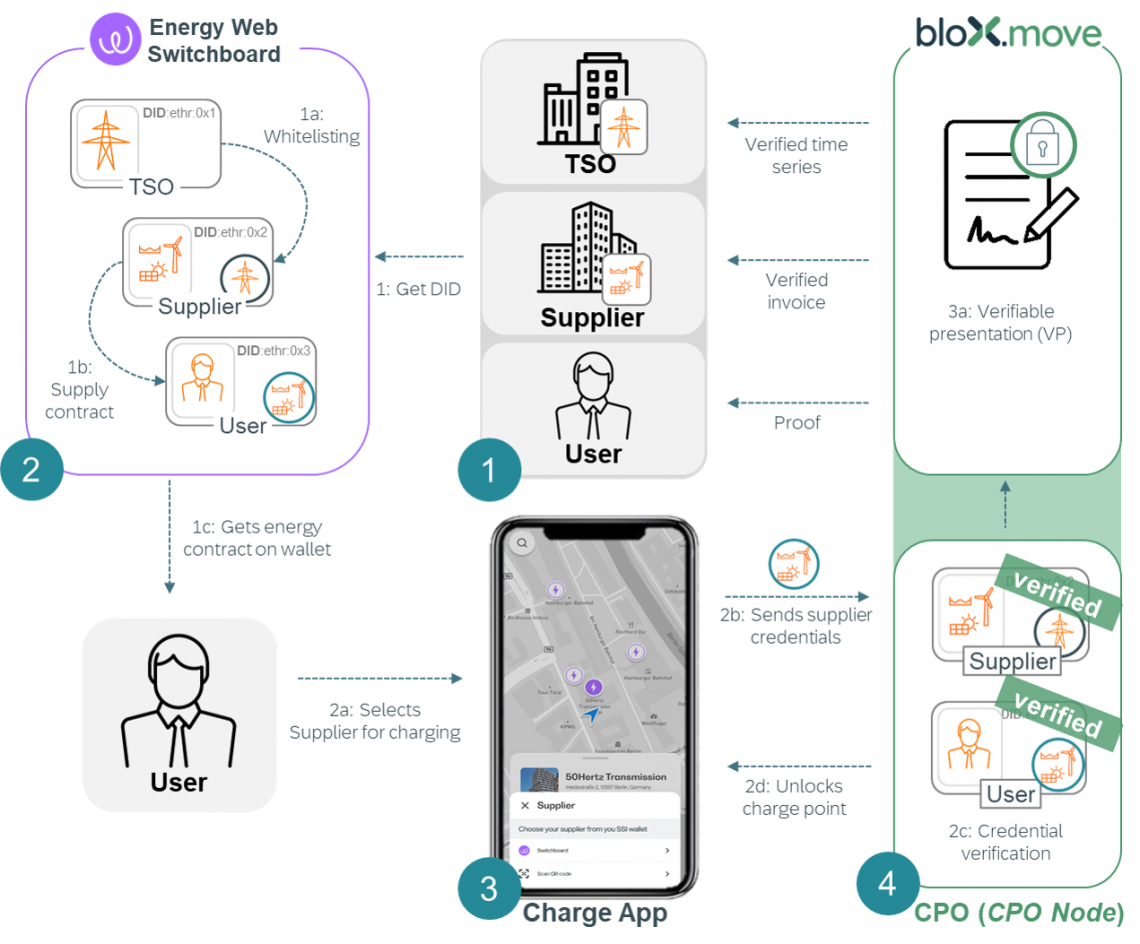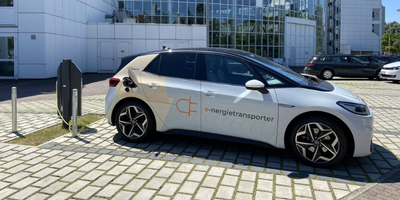16 December 2022
ReBeam protocol allows EV drivers to choose their energy retailer at public charging stations
The electrification of the mobility sector is one of the most important milestones we need to reach on the road to climate neutrality. To ensure it is successful, a large number of electric vehicles (EVs) and charging processes must be integrated into the energy system.
Why this project
Today, EV owners have no choice regarding their supplier or the origin of the energy they use; instead, charge point operators select the energy suppliers EV owners have to engage with.
Aiming to provide a solution to this challenge, Elia Group, the Energy Web Foundation, Bloxmove and Lichtblick launched the ReBeam project. As part of ReBeam, individual charging processes were registered, allowing customers to select which supplier they wished to use when charging their EVs at public charging stations. ReBeam involved the concept and use of a virtual balancing area (VBA) to settle the energy amounts involved; moreover, new technologies such as self-sovereign identities (SSIs) were leveraged to create trust among each party and trust in the exchange of data. This led to leaner processes, fewer intermediaries, more flexibility being delivered for end users and an effective and targeted integration of charging processes into the network.

They key aim (and main challenge) of the project was to provide trusted and verified information to all involved parties. The data sources relating to a charging activity can be clustered into 3 domains: User; Mobility; and Power sector. The standard practice has been for all 3 domains to be organised into silos; moreover, the exchange of data has not been standardised. ReBeam sought to find out how trust could be enabled between these domains, so that: customers would be offered full flexibility regarding their choice of supplier; charge point operators could authorise the charging sessions; and the energy sector would have all the information they needed and could trust in the information to run the VBA.

Approach
Instead of following a classical platform approach, the team built an open and fully decentralised system which ran decentralised technologies: SSIs and standards like decentralised identifiers (DIDs) and verifiable credentials (VCs). Please see the explanatory video in the box on the right for further explanation.
In setting up the project, the team put in place the following (see also the graphic above):
- Digital identities: all parties were given a DID and wallets so that they could exchange and store information. Suppliers were whitelisted, allowing them to participate in the VBA and so issue supply contracts to their customers. Energy Web’s switchboard (see below) was used for this.
- User application: an application was developed which allowed customers to select their charge points and authenticate themselves with their supplier contract. This contract was presented as a VC from their wallets.
- CPO Node: the charge point operator (CPO) was equipped with a CPO Node which allowed the authenticity and validity of the presented credential to be verified. Once the CPO had verified that the supplier was indeed whitelisted and the customer had a valid supply contract, the CPO started the charging session.
- After charging, the CPO Node created a verifiable invoice (which included the charging records, the customer’s DID and supplier information), which it then sent to the supplier and grid operator. The grid operator used the information to operate the VBA and the supplier received all the information it required for invoicing its customers.
-
Energy Web’s switchboardA key aspect of this multi-stakeholder interaction was identity. ReBeam leveraged SSI technology and used Energy Web’s Switchboard, allowing DIDs and VCs to be issued. These DIDs were used to authenticate each party, validate claims and sign messages exchanged between parties, who could verify the events and stay in control of their data and identity.
-
BloXmove's CPO NodeThe CPO Node was embedded in the CPO’s backend and had two functions. Firstly, it verified the credentials provided by the customer; and secondly, it created a verifiable invoice of the charging session. This verifiable invoice not only included the charging time series but also linked the DIDs of the customer, the chosen electricity supplier and the charge point together in one verifiable document. The CPO Node, developed by Bloxmove, ensured that all this data was correct and incorruptible, such that it could be submitted for further processing in the VBA and then used for invoicing processes provided by the supplier.
-
The Open Charging Network (OCN)The OCN worked as an open-source decentralised e-roaming hub. The OCN enabled data sharing, messaging, transaction signing, and verification (amongst other thingsAs part of the ReBeam project, the OCN was used to enable interconnectivity between charge points and the software that mimics the mobility service provider. ). It could be leveraged for existing use cases (including green charging, grid flexibility, settlement services, etc.) or customised and adapted for new ones whilst still complying with industry standards, like OCPI.
-
Virtual Balancing Area (VBA)The VBA was a new concept, which created transparency and flexibility, allowing energy suppliers to be switched at charge points. It aggregated all charge points in the area it related to. Charging sessions undertaken by each customer were assigned to the supplier and therefore, ultimately, the balancing responsible party. This means customers – not charge points – can be accounted.
Results
The project involved technological breakthroughs in terms of the authentication of customers at charging stations; the selection of preferred suppliers; the authorisation of charging process by charge point operators; and the grid operator’s assignment of charging processes to chosen suppliers (who were part of a VBA).
Key characteristics of the project:
- Consequent application of SSIs and standards like DIDs and VCs
- Disintermediation: entities that are usually required for providing trust were replaced by technology. The role generally played by e-mobility service providers was not required.
- Data sovereignty of private data: the customer only needed a wallet and valid contract in the form of a credential to start a charging session.
- Open standards and protocols: the project used OCPI through the Open Charging Network and followed W3C.
Partners
 |
 |
 |



